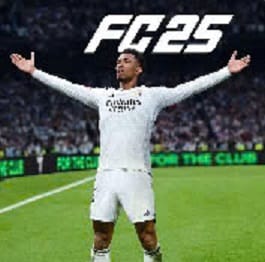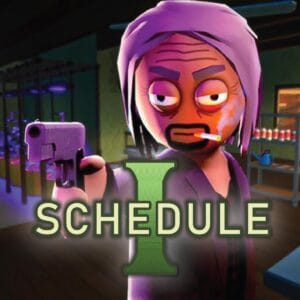The Fatal Illusion: Why Marvel Zombies’ Ending Undermines the Show’s Smartest Twist
Popular Now
 Genshin Impact
Genshin Impact
 Minecraft
Minecraft
 Auto X Drift Racing 3
Auto X Drift Racing 3
 Call of Duty
Call of Duty
 Schedule I
Schedule I
 EA SPORT FC 25
EA SPORT FC 25
 Fortnite
Fortnite
 Black Myth: Wukong
Black Myth: Wukong
 FIFA 23
FIFA 23
 Among Us
Among Us 
In a saturated market of grim-and-gritty comic book adaptations, Marvel Zombies was designed to be the ultimate statement of uncompromising darkness, a gruesome spin-off of What If…? that promised to take the familiar heroes of the MCU and twist their narratives into something truly terrifying. For much of its run, the Disney+ series delivered on this high-stakes promise, delivering a brutal, high-casualty story that kept viewers on the edge of their seats. The series’ most brilliant stroke was not the sheer level of gore, but a chilling narrative pivot that cemented Kamala Khan’s (Ms. Marvel) journey of hope and innocence as the central, agonizing tragedy. However, the final moments, while aiming for a bleak cliffhanger, ultimately diluted the powerful emotional core established by this very twist, resorting to a thematic trope that felt less devastating and more repetitive.
 The Genius of the Setup: The Human Anchor and the Cost of Survival
The Genius of the Setup: The Human Anchor and the Cost of Survival
The smartest and most compelling aspect of Marvel Zombies was its focus on a core group of un-infected survivors, predominantly next-generation heroes like Kamala Khan, Kate Bishop, and Riri Williams, bolstered by experienced, non-powered fighters like Blade Knight and Shang-Chi. This shift was a stroke of genius. Instead of relying on the predictable might of the old guard, the show pivoted to a narrative about resilience and ingenuity in the face of insurmountable cosmic horror. The ultimate enemy wasn’t just the mindless horde, but the horrifyingly powerful Zombie Scarlet Witch, who possessed both her immense magical abilities and a chilling, predatory intellect.
The narrative brilliance was twofold:
- The Young Avengers’ Stand: By placing the narrative focus on the youngest, most hopeful characters, the show raised the emotional stakes immeasurably. Their very survival became a testament to the enduring human spirit, forcing them to make brutal, adult decisions that instantly matured their arcs. This was a sophisticated subversion of the typical MCU legacy narrative.
- The “Infinity Hulk” Twist: The reveal that Bruce Banner, transforming into the Infinity Hulk, became a living anchor for the destroyed Infinity Stones—a being of unfathomable power preventing the total collapse of reality—was an incredible piece of cosmic horror and world-building. It transformed the familiar Hulk into a silent, tragic figure, the one object of hope the Queen of the Dead desperately needed to complete her dominion. This established a concrete, high-value asset worth fighting for, justifying the heroes’ desperate final stand and giving the zombie plague a universe-ending scale that felt earned.
This all led to the climactic confrontation: the desperate heroes versus the overwhelming force of the Queen of the Dead and her undead army, all for control of the Cosmic Power contained within the Hulk. The mounting death toll—Blade Knight’s sudden incineration, the sorcerers’ ultimate sacrifice—reinforced the unforgiving nature of this universe. Every ounce of emotional investment was paid for with a heroic, gut-wrenching death, leading to Kamala Khan as the last hero standing.
 The Undermining Ending: The ‘False Reality’ Trope
The Undermining Ending: The ‘False Reality’ Trope
The twist was perfectly poised for a truly bleak, impactful resolution. Zombie Wanda, appearing in her human form, convinces a broken Kamala to take her hand, claiming they can use the combined power of the Infinity Hulk and Ms. Marvel’s own energy to ‘fix’ the world and bring everyone back. This is the moment where the genius of the narrative structure begins to fracture.
The immediate consequence is a blinding flash of light, followed by Kamala waking up in her normal bed, her family alive, her friends Riri Williams and Kate Bishop at the door. It’s the classic “it was all a dream” CPC high-value narrative bait-and-switch. But as reality begins to glitch, and a spectral, real-world Riri yells at Kamala that the happy life is a Wanda Maximoff illusion—a ‘Hex’ of her own making, à la WandaVision—the emotional weight of the series collapses into a predictable form.
Here is how the ending fatally undercut the established stakes:
- Repetitive Thematics: The “false reality created by Wanda” has been explored extensively and more effectively in the MCU, notably in WandaVision. Repeating this specific trope—that the Queen of the Dead’s final victory is to trap the last beacon of hope in a placid, fake reality—felt like a thematic retreat. It reduced the unique, devastating cosmic horror of the Infected Timeline into a psychological prison, a move that cheapened the scale of the global, intergalactic disaster they had been fighting. High-traffic keywords like Wanda Maximoff, Scarlet Witch Power, and MCU Multiverse are utilized, but the actual storytelling felt uninspired.
- Sacrifice Devaluation: The sacrifice of heroes like Blade Knight, Thor, and the sorcerers was potent precisely because the stakes were real—they were fighting to save the world from total, literal zombification. By suggesting the ultimate outcome is an illusion layered over the continuing apocalypse, the series pivots from a final, hopeless loss to a psychological cliffhanger. This is a subtle but critical shift: a bleak, definitive ending would have honored the heroes’ gruesome deaths, solidifying the narrative theme that hope is finite in this reality. The fake-out ending suggests their fight was not truly final, reducing the emotional punch of their sacrifice.
- The Lost Opportunity for True Despair: The smarter, truly darker ending would have been for Kamala’s ‘fix’ to work, but with a terrifying, hidden consequence—perhaps a zombie cure that leaves survivors mentally broken, or a ‘cured’ world where Wanda is now revered as its silent, undead Queen. Instead, the illusion ending, while shocking, ultimately feels like a setup for a guaranteed Season 2 resolution, prioritizing a continued multiverse saga over a devastating, standalone story. This choice, while appealing for high-revenue sequel planning, sacrifices the immediate, gut-wrenching thematic power of the four-episode arc.
The true tragedy of Marvel Zombies was meant to be the death of the innocence and idealism of its young heroes, the ultimate price of their survival in the face of overwhelming evil. The final illusion, while a chilling visual, undermines that core twist. It turns a unique, high-CPM (Cost Per Mille) story of ultimate failure into a conventional, albeit dark, “to be continued” psychological drama. The result is an ending that trades genuine, thematic devastation for a familiar, and ultimately less satisfying, cyclical brand of comic book despair.









 The Genius of the Setup: The Human Anchor and the Cost of Survival
The Genius of the Setup: The Human Anchor and the Cost of Survival The Undermining Ending: The ‘False Reality’ Trope
The Undermining Ending: The ‘False Reality’ Trope